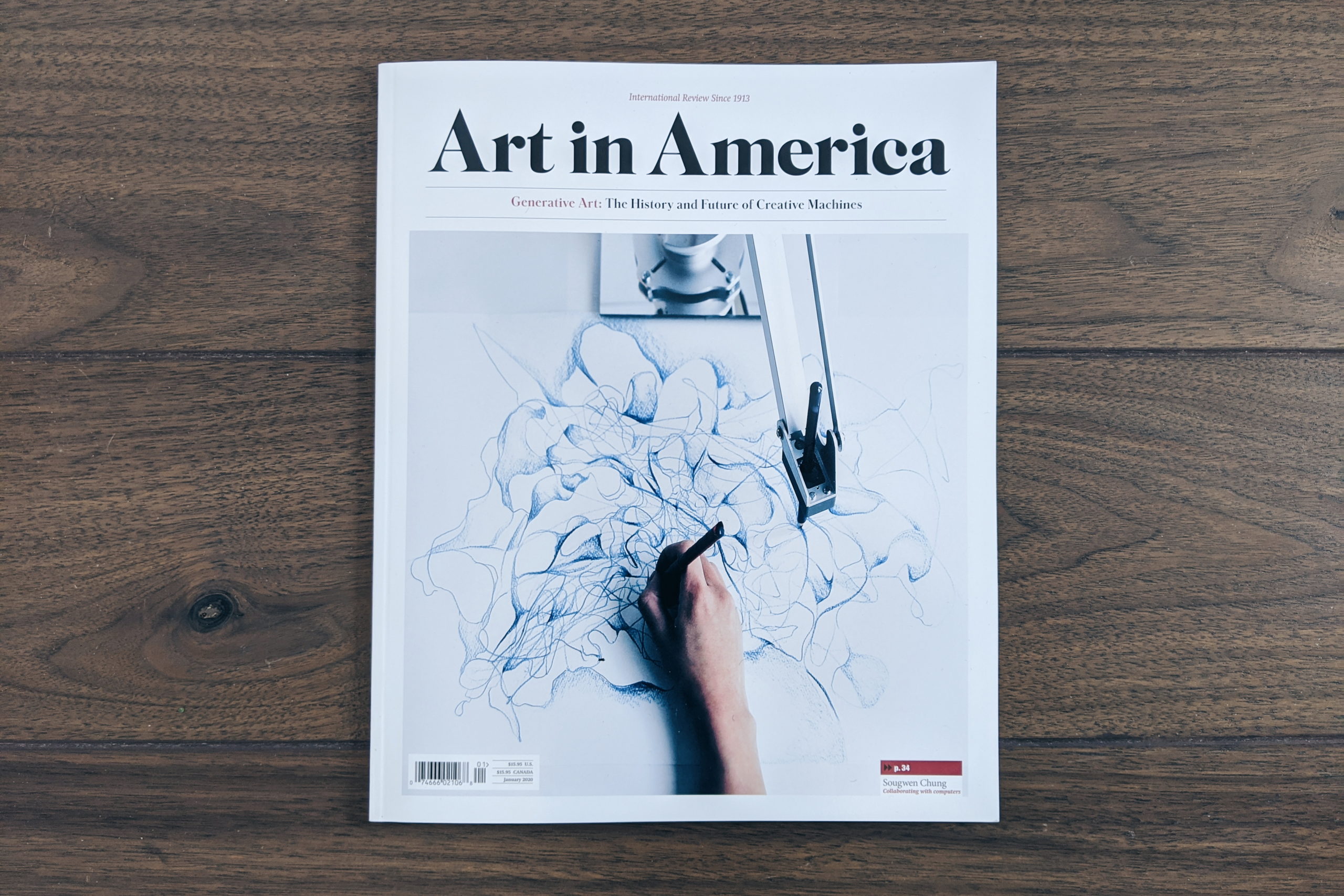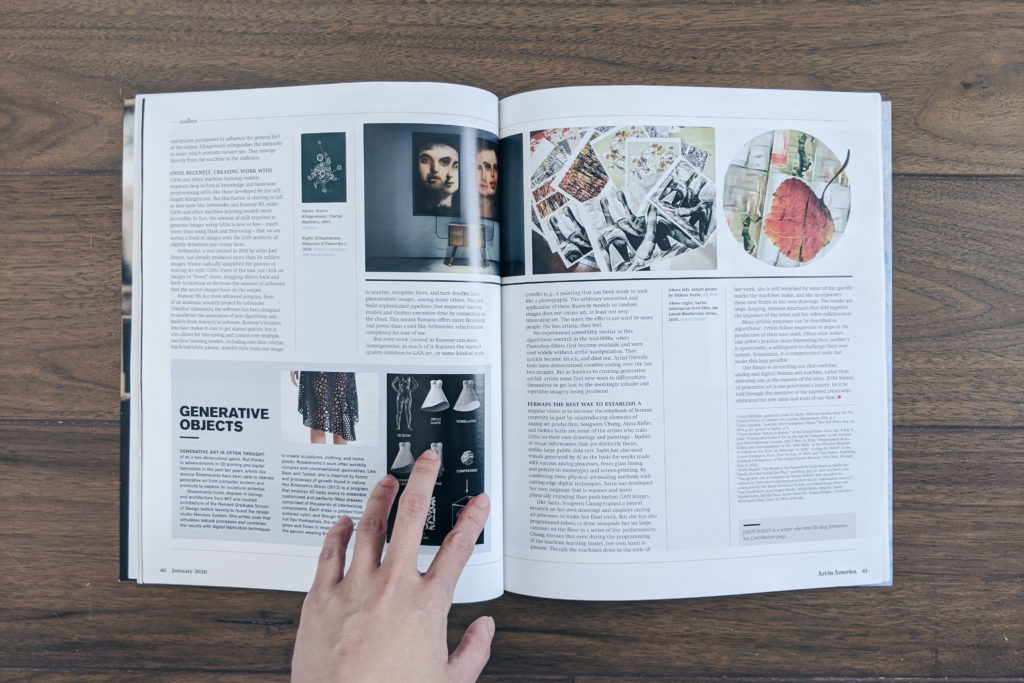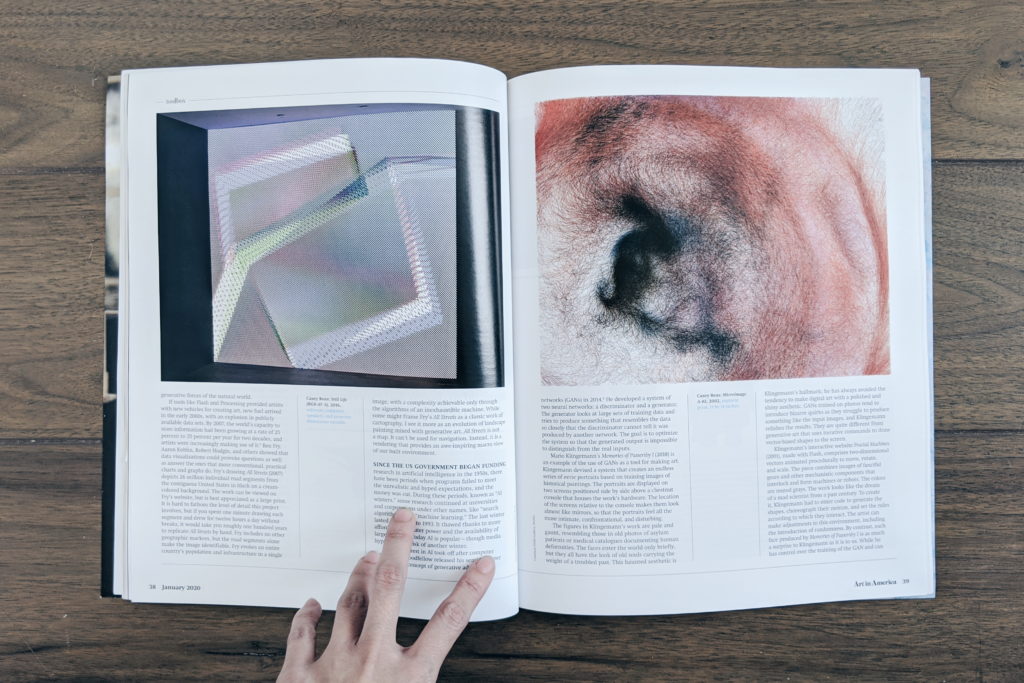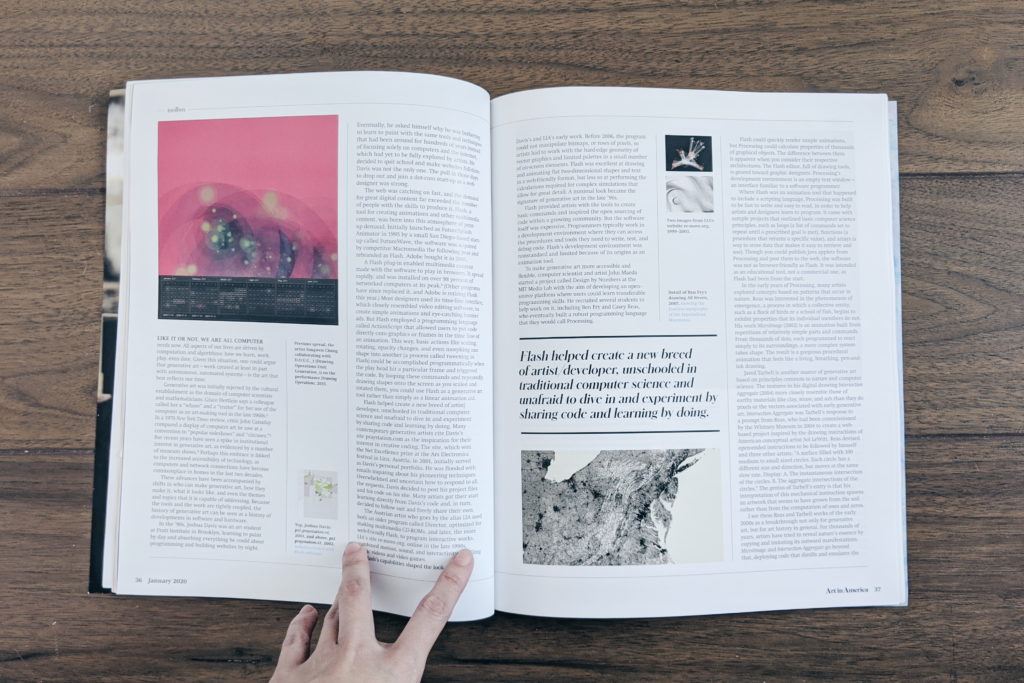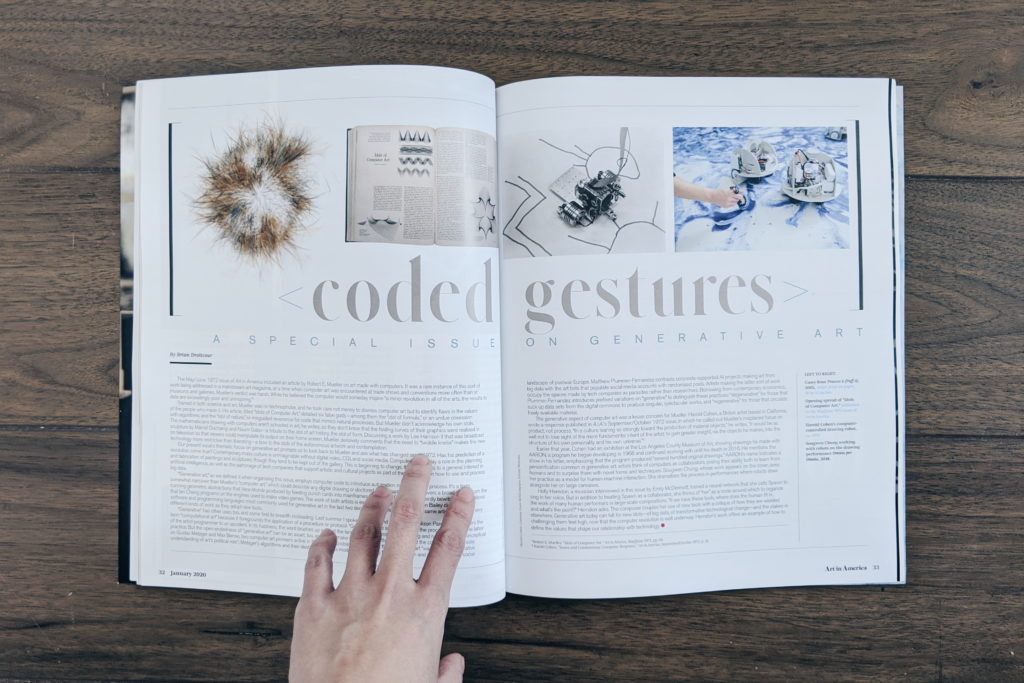Thank you to Art In America magazine and Jason Bailey for featuring my drawing on their January issue, focusing on Generative Art. This represents a milestone in the industry of Art and Technology, and its an truly an honour to be featured here.
I made this drawing in 2017, during a residency in Tokyo. The project was an experiment; entirely self directed, simply to explore a curiosity. At the time, I was just getting started working with robots after many years of making digital and installation art through code and drawing.
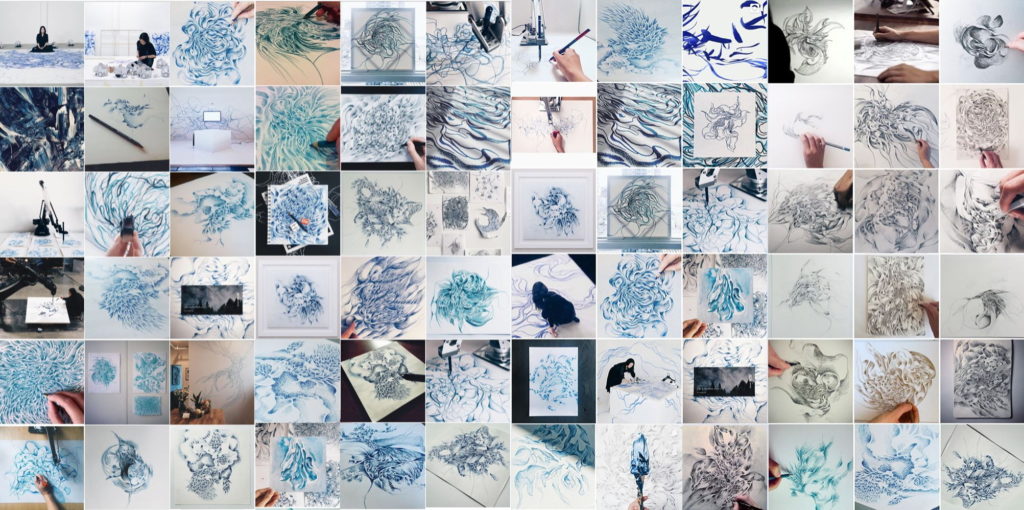
The process of moving beyond what was on-screen was liberating; bringing code into a medium like robotics was a way I could return the physicality of art making back into the work.
It felt like a coming home — my years of drawing, which always felt obscured by software tools, felt like it could be playful, adaptive, and imperfect, in a way that could help me grow as an artist.
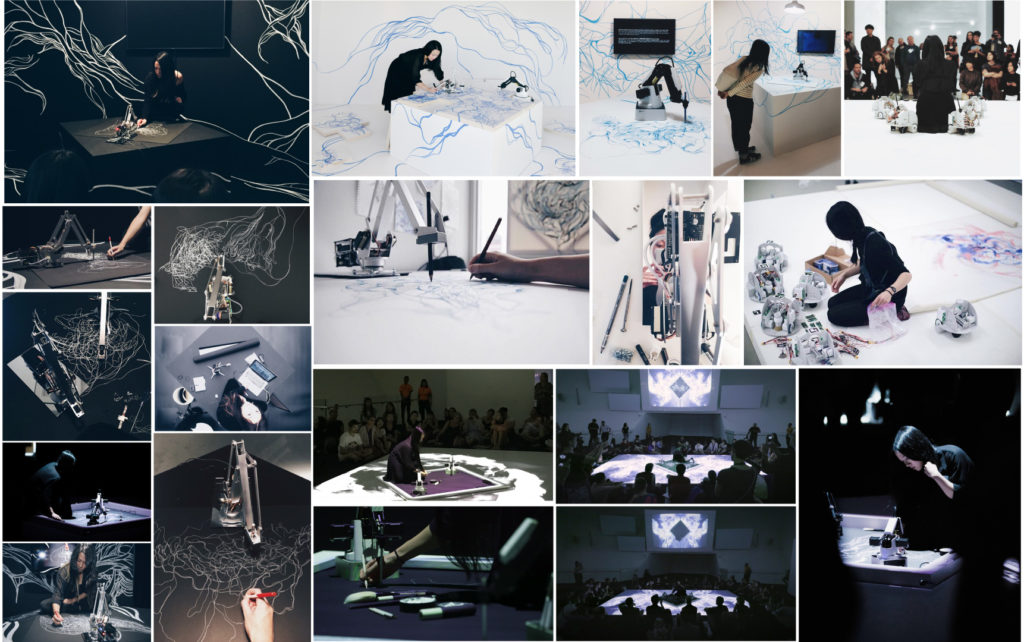
I’ve learned a lot about technology through making art with machines — which began over 5 years ago. I learned that the human hand is always present, and “the AI” is always a system that reflects some known and unknown aspects of its designer.
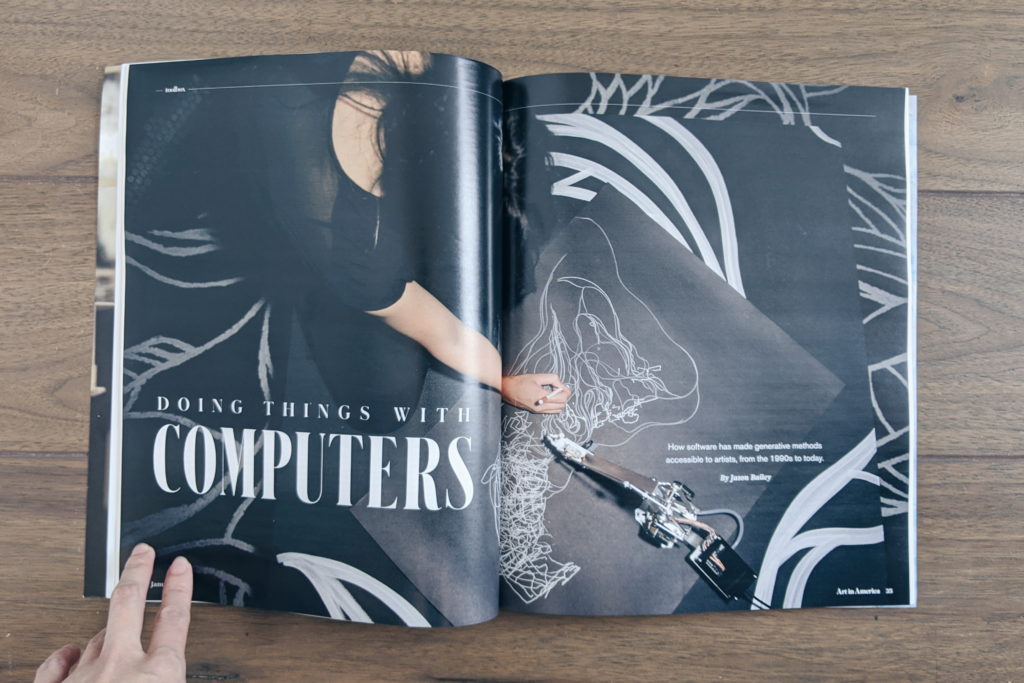
There’s a lot of hype surrounding this idea of “AI Art” at the moment. I think it’s largely driven by a subconscious anxiety of how intertwined in our lives digital technology has become. People appear to really like thinking that the AI is making music, making poetry, making painting. Perhaps this is because if “the AI” can make beautiful art, it might somehow make up for the fact that “the AI” is also taking our jobs, making biased policy decisions, and shaping our society in ways we don’t really understand. The ‘AI as artist’ is an alluring idea that helps soothe, perhaps, a fear of these technologies, but it’s one that does nothing to empower us in the face of technological change.
As an alternative to this, I like to think of the potential for AI systems as collaborators. Why? Because we’ve all had collaborators, good and bad. Collaboration is about making with; it can be about control and dominance, but it can also be generosity and kindness. Ultimately, these AI systems can be created in the service of working together, to make something better for both human and machine.
For me, that’s what is promising and hopeful about working with these technologies - in fact, I think it might be an imperative. We should be designing these technologies to make us, and the world, better. To achieve this goal, art and technology are a very natural pairing; they both reflect the culture in which they are made, and both have the power to profoundly shape the future we want to see.
It’s thrilling to see the artists featured here, & to be part of an evolving canon of experimentation and collaboration. @annaridler @LIAsomething @glagolista @quasimondo @aaronkoblin @flight404 @goodfellow_ian @ben_fry @REAS @johnmaeda @_joelsimon @c_valenzuelab @joshuadavis
( See the full article showcasing our work here )
At my studio, we have so many exciting projects in the works that aim to expand the collaborative potential of art and technology.
We’re looking for likeminds to work with, so please get in touch if any of these ideas resonate with you.... and as always, so much more to come ~~

